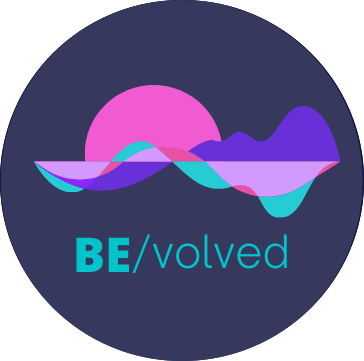AI Didn't Invent Slop—It Learned From Corporate America
Everyone’s losing their shit about AI slop.
Scroll through any platform and it’s wall-to-wall panic about ChatGPT articles junking up Google, bots flooding comment sections with gibberish. “AI is destroying the internet!”
Except AI didn’t invent meaningless content. We did. We’ve been mass-producing it for decades, and we trained entire generations of workers to churn it out without question.
I still remember an email thread from my old Fortune 500 job. Twenty-three messages about “aligning strategic priorities for Q4 stakeholder engagement.” By message fifteen, nobody knew what problem we were solving. By message twenty-three, someone scheduled a meeting to “synthesize our thinking.”
The meeting was forty-five minutes of corporate nothing-speak. The deliverable? A shared doc that seven people would “contribute to” and nobody would ever open.
If ChatGPT made that, we’d call it slop. Since humans did, we called it Tuesday.
The Original Content Farm
Anthropologist David Graeber nailed it in 2018 with Bullshit Jobs, roles that even the people doing them knew were pointless. But he missed an important element in his analysis: these jobs weren’t just creating meaningless work. They were creating meaningless content.
Think about your average corporate day:
Consultants pump out strategy decks for managers who don’t strategize
Managers write executive summaries for executives who don’t read
Analysts analyze things anyone with Google could figure out in ten minutes
It’s a content factory that makes BuzzFeed look scholarly.
A friend at big four consulting firm showed me her team’s monthly haul: sixty-seven PowerPoints, forty-three “insights reports,” twenty-nine optimization frameworks. Implementation rate? “Maybe three things. And we were going to do those anyway.”
That’s not work. That’s slop with a salary.
How the Slop Machine Works
Corporate slop is genius because it’s self-perpetuating. Unlike AI slop that dies when people ignore it, human slop gets validated by other humans making slop.
Here’s the cycle:
Someone creates a “competitive analysis” (five companies, one chart). Meeting happens. Three people nod. “Let’s expand the scope.” Now you need a “market assessment” (ten companies, bigger chart). Leadership wants “strategic recommendations” (obvious conclusions with bullet points). Those become “implementation frameworks” (fancy to-do lists).
Six months and $200k later, someone changes a process an intern could’ve fixed on day one.
But everyone got paid, so it worked perfectly.
The Data That Proved It
I should know about meaningless work. I used to work at Asana, the company that coined the term "work about work" back in 2008. We were founded specifically because our co-founders got frustrated watching Facebook employees spend most of their day in meetings and emails instead of building products.
Our research consistently found that knowledge workers spend 60% of their time coordinating, searching for information, and managing priorities rather than doing the skilled work they were hired for. Think about that: only 27% of your workday goes to your actual job. The rest is slop with a salary.
The numbers were brutal. People lose 157 hours annually to unnecessary meetings. They work 455 extra hours late each year just to catch up on real work. Managers spend 62% of their time coordinating instead of leading or strategizing.
Asana published this research from 2019 through 2024, documenting a crisis that had been building since smartphones took over offices. This wasn't an AI problem waiting to happen. This was a coordination problem that had been strangling productivity for over a decade.
The "work about work" Asana measured was exactly what Graeber described: meaningless activity that exists to justify more meaningless activity. The only difference was we put numbers on it.
The Assimilation Trick
Here’s why we can’t see our own slop: the system trains us not to.
You start a corporate job thinking you’ll solve problems. Instead, you learn to navigate systems. You master their jargon until you forget your own words. You optimize their processes until you can’t remember what problem you came to solve. You produce their content until busywork feels important.
It’s not stupidity. It’s assimilation.
The machine doesn’t want you to ask whether the deck should exist. It rewards you for making better decks. It doesn’t want you to question the meeting. It promotes people who run efficient meetings about nothing.
After a few years, you stop noticing the work is meaningless. You just get better at producing it.
But what if you didn’t?
The Double Standard
The same people freaking out about AI destroying content are liking LinkedIn posts about how a barista’s latte art revealed the secret to customer retention.
“What my morning coffee taught me about leadership” gets 10,000 likes. ChatGPT writes the same post and suddenly we’re worried about the future of human communication.
The only difference? One comes with a job title.
What We Actually Trained AI On
Here’s what nobody wants to admit: AI learned slop from studying human slop.
Every boring AI blog post about productivity hacks was trained on thousands of boring human blog posts about productivity hacks. Every spam AI email learned from decades of human spam emails. Every generic AI LinkedIn post studied years of humans posting generic LinkedIn content for engagement.
We spent twenty years filling the internet with marketing fluff and SEO garbage, then acted shocked when AI learned to make marketing fluff and SEO garbage.
We’re basically angry at our digital kid for repeating what we taught them.
The Economics Make No Sense (But Perfect Sense)
AI slop exists because content creation is free.
Human slop exists because meaningless work is expensive, which makes it valuable for budget justification.
I know someone earning $120k to make quarterly reviews that summarize stuff everyone already knows for meetings where nothing gets decided. Economically insane. Organizationally rational.
Same incentives as AI slop. Just with better PowerPoint templates and dental plans.
The Real Crisis
AI slop will get filtered out. Google will adapt, platforms will evolve, people will learn to ignore it.
Human slop won’t disappear because it props up entire organizations. It keeps people employed and budgets spent. We’ve built an economy around producing content nobody wants for systems nobody understands.
Then we got mad when AI made it obvious how pointless it all was.
That’s the actual crisis.
What This Means
The most radical thing you can do isn’t optimizing the machine. It’s refusing to feed it.
Stop making decks nobody reads. Stop attending meetings about meetings. Stop creating reports that summarize other reports. Stop producing content that only exists to justify producing more content.
I know that’s easier said than done when your mortgage depends on looking busy. But recognizing the game is the first step to not getting played by it.
The machines aren’t ruining content. They’re just really efficient at making the content we were already ruining.
The slop was coming from inside the office all along.
David Graeber’s Bullshit Jobs: A Theory (2018) documented how modern work creates roles that even their occupants know are meaningless—a problem that extends way beyond individual jobs into entire content ecosystems.
Asana's Anatomy of Work research provides comprehensive data on "work about work" and its impact on productivity.
How Internal Promotions Can Contribute to a More Diverse and Inclusive Workplace
5 Ways Internal Promotions Can Contribute to a More Diverse and Inclusive Workplace
As more companies are making conscious efforts to create a diverse workforce and promote inclusivity, I often find that, as these efforts get lumped together under umbrella acronyms like “DEI”, “DEIB”, and “I&D,” they run the risk of falling into the trap of becoming corporate buzzwords devoid of real meaning.
Where I most often see a lot of organizations focus their energy is on the recruitment and hiring of more people from historically excluded backgrounds. This work fits nicely under “Diversity” efforts, but does not always address inclusion, belonging, or equity. This is why according to the Kapor Center’s Tech Leaver’s Study we see marginalized people leave tech organizations at a rate that is disproportionately higher than their peers who are a part of dominant groups. Having employees from underrepresented groups leave organizations more quickly sabotages any gains a company may be making with hiring.
While I am excited to see companies striving to bring in more diverse talent, Diversity, Equity, Inclusion, and Belonging work each require different approaches in order to see their full benefit. To be truly successful, this type of work requires a multi-pronged, integrated, and years-long strategy.
But…doing something is better than doing nothing!
One tactic to retain diverse talent that’s often overlooked and underutilized across many organizations is a strong investment in developing and promoting underrepresented employees already hired.
Here are 5 reasons why promoting underrepresented employees from within is essential when creating a diverse and inclusive workplace:
Fosters Inclusivity
Promoting underrepresented employees from within promotes inclusivity and sends a clear and visible message that the company values diversity. It creates a culture where all employees feel heard, valued, and respected, regardless of their background. This, in turn, helps in building a strong, inclusive team with a focus on collaboration.
Increased employee engagement, loyalty, and retention
When employees see that there are opportunities for career advancement within the organization for people who look like them, they are more likely to feel valued and invested in the success of the company. Marginalized employees who feel valued and appreciated showcase increased motivation and productivity and are more likely to stay with the company for a more extended period, reducing turnover and saving time spent on recruiting, hiring and training.
Integrates a Unique Perspective
When people from different backgrounds and with different experiences are given the opportunity to lead, you truly unlock the value of diversity. These employees bring different experiences, skill sets, and backgrounds that can help the company grow and innovate. Considering these multiple perspectives can help the company better understand a wider breadth of its customers and develop better, more complex approaches to cater to their needs.
Helps to create a more diverse leadership team
Promoting underrepresented employees from within brings unique perspectives to the table at more senior levels. Having a more diverse team of leaders helps with the continual recruitment cycle and can increase the hiring of underrepresented groups, since these leaders tend to have more diverse professional networks to draw from. Diverse employees occupying visible positions of influence can also attract talent who want to work for leaders who share their identities. These benefits are well documented in a report by McKinsey & Company that found that diverse companies perform better, especially if an organization's leadership is diverse.
Improves the organization's reputation and brand image
Consumers and stakeholders are increasingly looking for companies that prioritize diversity and inclusion, and promoting underrepresented employees can help to demonstrate that commitment. It shows that your organization is committed to creating a diverse and inclusive workplace, which is crucial in today's society. This, in turn, can lead to increased customer loyalty and support, as well as a stronger reputation in the marketplace,which ultimately helps with recruiting more diverse talent.
Especially as we are seeing more layoffs and companies hiring at much slower pace, internal investment and promotion in the employees that are currently a part of your team becomes a viable strategy to help push these efforts forward in a way that doesn’t pause your work, but instead continues to have real and sustainable impact in a measurable way.
We’ve seen many concentrated efforts fall under the umbrella of “DEIB” work over the years, but getting people to join your organization is only the first step of this work it is vital that leaders begin to understand how inclusion, equity, and belonging must be integrated and committed to across all efforts, from recruiting and beyond, to see continual and sustained impact.


